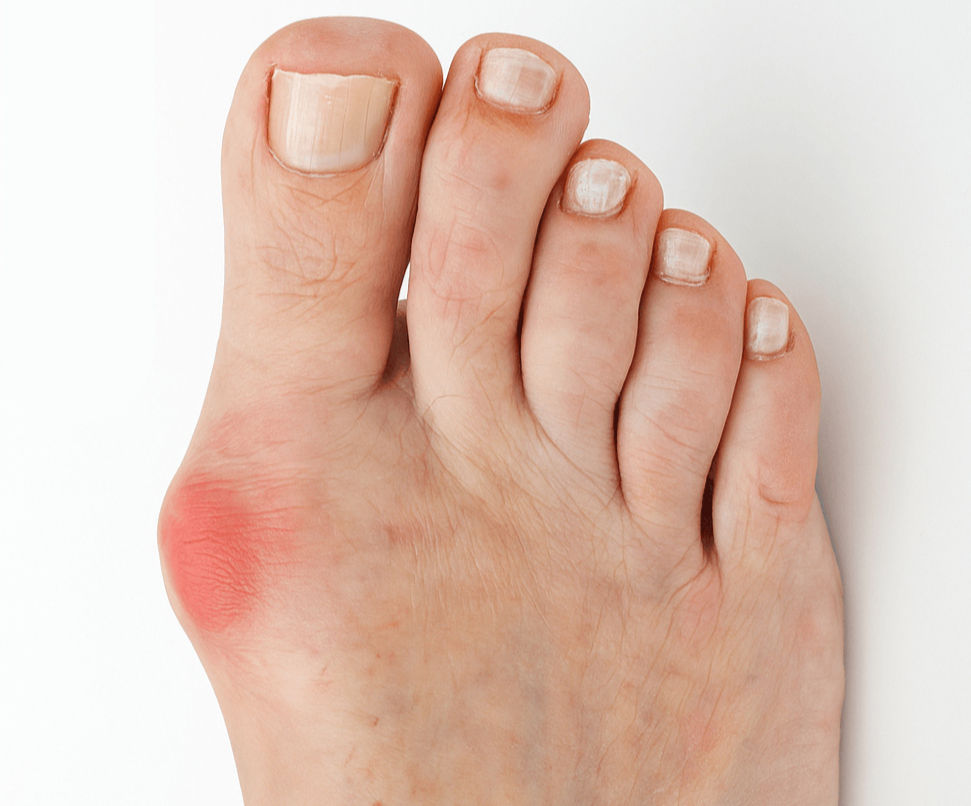What Is a Bunion?
- Cristina Varon
- Sep 1
- 2 min read
A bunion, medically known as hallux valgus, is a bony bump that forms at the base of the big toe, causing the toe to lean inward toward the second toe. This misalignment can create pressure, pain, and difficulty in fitting shoes properly. Over time, the bunion may worsen, limiting mobility and daily comfort.
Causes and Risk Factors of Bunions
Understanding why bunions happen is key to prevention:
Genetics & foot structure: Flat feet or low arches can lead to more stress around the big toe joint.
Footwear choices: Tight, narrow, or high-heeled shoes crowd the toes and increase bunion risk.
Gender predisposition: Women are more likely than men to develop bunions, partly due to footwear styles.
Medical conditions: Arthritis and hypermobility can contribute to joint misalignment.

Symptoms and Everyday Impact of Bunions
Common signs that a bunion is forming include:
Visible bony bump at the base of the big toe.
Redness, swelling, or calluses on the affected side.
Pain during walking or wearing shoes.
Toe drifting toward the second toe, even overlapping.
Left unchecked, bunions can limit activity and lead to chronic discomfort. Early recognition often makes treatment more effective.
Treatment Options for Bunions
Conservative (Non-Surgical) Approaches
Footwear adjustment: Choose shoes with a wide toe box and good arch support.
Pads and cushions: Use gel or foam bunion pads to reduce friction.
Toe spacers: These devices help align toes and relieve pressure.
Exercises: Stretching and strengthening foot muscles can slow progression.
Surgical Options
When conservative remedies are insufficient, surgery may be recommended, especially for persistent pain or deformity.
When conservative remedies are insufficient, surgery may be the most effective solution—especially if a bunion causes persistent pain, deformity, or interferes with daily activities. Surgery is not always the first step, but for many patients it provides long-term relief and restores normal foot function. Bunion surgery is recommended in the following situations:
Constant or severe pain that limits walking or exercise.
Difficulty finding shoes that fit comfortably.
Toe crossing or significant deformity.
Ineffectiveness of non-surgical treatments like pads, spacers, or orthotics.
Recovery from bunion surgery can vary depending on the procedure:
Initial healing usually takes 6–8 weeks, during which patients may wear a special surgical shoe or boot.
Full recovery with return to sports or high-impact activities may take up to 3–6 months.
Physical therapy and tailored exercises are often recommended to regain strength and mobility.
Why Early Attention to Bunions Matters
Addressing a bunion early can prevent its advancement and improve outcomes. Using supportive footwear, modifying activities, and practicing foot exercises may delay or even eliminate the need for surgery. If the bunion is already painful or interfering with mobility, consulting a specialist is prudent.
Ready to Take the Next Step - Book an Appointment Now
If you're experiencing pain or discomfort from a bunion, don't wait. Book an appointment to explore tailored treatment options and take control of your foot health. Your comfort and mobility matter—let me help!






Comments